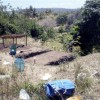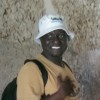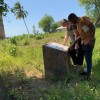In this piece, Matty Rowland (MA student at the University of York) explains part of the heritage team's project in setting up a digital Twine app which would help to reveal the hidden stories of artefacts held in the Pangarithi. This was created in collaboration with key partners and individuals in Pangani.
MATTY ROWLAND: University of York, MA Alumnus
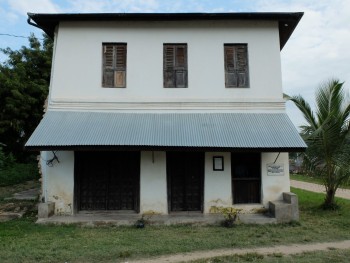
On our first day in Pangani, Tanzania, members of the CONCH project team met with representatives of Uzikwasa and the local radio station, Pangani FM, to discuss our collective project objectives for the coming week. Our’s was to develop a prototype piece of interactive interpretation for the heritage centre in Pangani, known locally as the Pangarithi. Together we identified several objectives which were in line with Uzikwasa’s aims of improving the quality of life around Pangani.
Following this meeting, and in order to further refine these objectives, the overall project vision, and how these could be tied together into a relevant and useful digital interactive for the Pangarithi, we pursued a design process wherein we worked from higher-level ideals down to specific components of the proposed experience, articulating them all on large sheets of paper. This enabled us to consider the vision and objectives discussed in the original meeting against the wide variety of options available to us in developing the specific interactive experience. Reflecting Uzikwasa’s targets, we determined that encouraging respect and care for the present through reference to the past among the community were key outcomes, which demanded that we create something that people could emotionally connect with. As a group we expressed these outcomes as follows:
- Hope – For now and for the future
- Respect – For people of the past
- Curiosity – To learn more about the people of Pangani
- Desire – For the objects
- Excitement – About Pangani’s many and complex histories
- Empathy – Feeling a connection to and being able to take the perspective of someone from the past
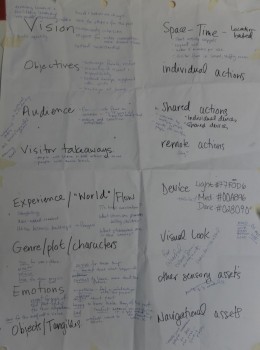
By stirring these emotions and others, we were hoping that people would leave and encourage others to visit, and that they would return to visit again in the future and ideally raise the visibility of - and take part in - other activities offered by Uzikwasa and the Pangarithi.
At the Pangarithi, a small exhibition area formed of two display cases containing artefacts was recognised as an opportunity to evoke these emotions, primarily because it had little accessible interpretation to encourage people’s attention to the objects. Some of these artefacts were quite expressive of individual lives and activities – e.g., a key, a button, broken plates – but their stories were not yet being told to visitors. Uzikwasa had already noted a desire to host the digital interactive on a tablet device, and from our perspective, this also allowed us to design the experience so it could be viewed and shared by multiple people simultaneously. To further make it appealing we considered style and aesthetic, deciding together that the experience should be eye-catching and playful, using colours associated with water such as blue and green, due to Pangani’s geographical location by the sea and along a river.
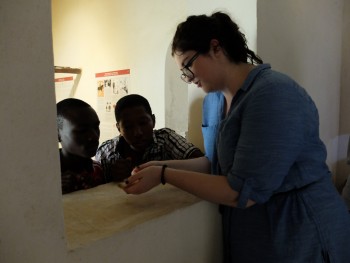
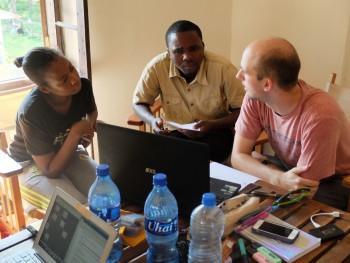
With these decisions agreed upon, the team split into small groups to work on different aspects of the project. Some used the software ‘Twine’ to create a CSS code template from scratch, which sets general design features such as font and colour. Others set about writing stories in both Swahili and English using the objects on display and research in the form of archaeological reports, pictures, and interviews with people who live and work in Pangani. These stories were then inserted into ‘Twine’ to create a prototype to take back to Uzikwasa.
A meeting was held on our last day in Pangani with representatives of Uzikwasa and Pangani FM. After every member of the team was asked how they found their experiences over the past week and what challenges they personally faced along the way, Uzikwasa and Pangani FM’s representatives were shown Swahili and English versions of the prototype by team members Balele and Meghan. It was received enthusiastically, with Novatus Urassa of Uzikwasa saying “thank you very much. It’s good, it’s exciting”. Potential for its refinement into something that furthered the leadership development goals of Uzikwasa was discussed, and our return next year may see this potential realised.
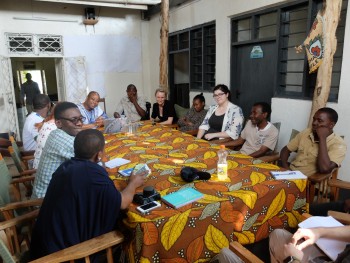
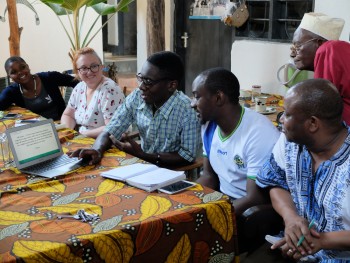
Our prototype used simple stories with choices of multiple endings to think through the personal histories of the objects in the Pangarithi. Woven into these stories were larger decisions and questions about visitors’ values and interests in the present – which connected to the different paths that could be followed within the narrative. It was these decision making tracks which were recognised for having the potential to encourage deeper reflection and action – and which we hope to develop further in the future. Stay tuned!

